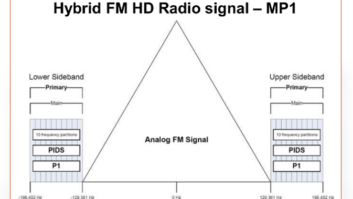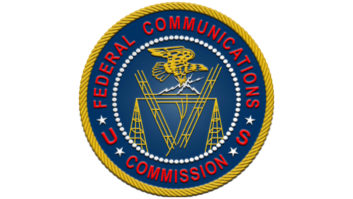Update on LPFM Rules
Jul 1, 2012 1:30 AM, by Jeremy Ruck, PE
When we last discussed LPFM facilities, the primary focus was on the elimination of the third adjacent protection requirements to full-service facilities. Now almost two years later and a couple of translator articles in between, we find that LPFM and translators are inextricably linked. The connection between these two services is a result of the necessary implementation of certain provisions of the Local Community Radio Act of 2010 (LCRA). I have always likened the FM allocation situation somewhat akin to the movement of electrons and “holes” in a semiconductor, and it is an undeniable fact that the demand for limited spectrum space has certainly decreased the number of “holes” in the substrate.

With the changes in LPFM rules, you may see more antennas like these appearing on tower sites.
The first big ticket item in the LCRA, signed into law by the president in January 2011, is the removal of the third-adjacent protection requirements. The elimination of the third-adjacent requirement is a fairly simple concept, and is one that has been bantered about for many years, but was finally changed. In a nutshell LPFM applicants and licensees will no longer be required to maintain the third-adjacent spacing requirements to other LPFM, full-service FM, FM translator, and FM booster stations. There is a caveat to that provision, however.
Facility protection
Facilities that provide radio reading services via subcarrier must continue to be protected. When the LPFM service was established in 2000, the Commission did not implement additional provisions to reading services facilities reasoning that the subcarrier was transmitted within the assigned frequency, and was therefore receiving the same protection received by the main broadcast station. Shortly thereafter this decision was reconsidered due to concerns about the greater vulnerability of the specialized service receivers to third adjacent interference. Their designs caused them to be somewhat more susceptible to such interference than general consumer radios. Because of this, and the valuable service provided, the LCRA maintains the existing spacing table to facilities broadcasting reading services.
The other big item of note was the requirement ensuring the availability of spectrum for LPFM stations. The broad provisions of the act require that the Commission, when licensing translators, boosters, and LPFM stations. ensures that licenses are available for all three services, that the licensing decisions made are based on local community needs, and that all three services will remain equal in status and secondary to existing and modified full-service FM stations. The end result of this will ultimately be that a number of the pending translator applications from 2003 will have to be dismissed. Although the quantity to be dismissed will not be as large as it would have been had the ten-application cap been implemented, it still will likely be a fair number.
– continued on page 2
Update on LPFM Rules
Jul 1, 2012 1:30 AM, by Jeremy Ruck, PE
These two, however, are not the only provisions that follow from the implementation of the Act. The LCRA explicitly grants the Commission the authority to waive second-adjacent spacing requirements. Under the relevant section of the Act, this waiver is permissible in instances where an LPFM station establishes that no interference is predicted to occur to any authorized service by taking into account all relevant factors including terrain-sensitive propagation models. On the translator side the Commission has routinely allowed specific studies demonstrating that zero population would be affected by an interference area although an interference area may nevertheless exist. The wording of the statute is such that the Commission has sought additional comment on how to implement this portion of it.
In addition, the Commission is also required to modify the current rules to address predicted interference to FM translator input signals on third-adjacent channels. This requirement makes sense. In many cases translators are employed to provide reception of full power FM facilities when not technically feasible As a result, the signals received by the translator, tend to be somewhat weak, and become usable through amplification either by antennas or active device. It is plausible that a co-located LPFM could desensitize the receiver of an FM translator receiving its material off-air. At present the Commission requires LPFM stations to remediate actual interference to FM translator input signals, but had not codified spacing requirements or other measures. Because of the statute language requiring the Commission to address predicted interference, it has been concluded that the subjective provision must be more strongly established.
Following standards
The current proposal is to track the Mitre standard. Under this proposal, the Commission is proposing that any application for a new or modified LPFM station not use a transmitter site within a potential interference area. This potential area is defined as any location within 2km of the translator site or any area within 10km of the translator site within azimuth of 30 degrees either side of the direct bearing between the translator and the source of the received signal.
If a proposed LPFM were to be located in one of those areas, then the Commission is proposing that a demonstration of lack of interference be made through one of two methods. First the applicant may show that the ratio of the signal strength of the LPFM signal to the translator signal is below 34dB at all locations. Alternately the equation in the Mitre report may be used. This equation computes a separation distance based on the ERP of the LPFM station, the gains of the translator antenna in the direction of the received signal and in the direction of the LPFM signal, and the predicted field strength of the desired signal at the translator site.
Moving out of the technical realm the Commission is considering eliminating the LP10 class of service, and implementing an LP250 class. To date there have been no LP10 facilities authorized, thus the elimination likely makes sense. The 250W class also seems to make sense, especially in rural areas. LPFM facilities in such an environment are plagued with viability concerns due to the population density.
Other proposed changes would correct rule wording to ensure that an LPFM applicant is community based, expand the commitment to serve Native Nations, relax the cross-ownership requirements, and permit Native Nations multiple ownership. Each of these proposed changes would likely serve to further foster the growth and continued viability of the LPFM service.
The upcoming LPFM window, which is likely still a year or two out, may represent one of the last opportunities for expansion of this service due to the finite nature of available spectrum. The proposed changes in the rules and procedures mandated by Congress, and implemented by the Commission, will seek to ensure that all secondary services get a shot at serving the local community.
Ruck is the principal engineer of Jeremy Ruck and Associates, Canton, IL.
July 2012
AVB for radio, a tour of WZIP-FM, update on translator rules, and Field Reports on the Inovonics David IV and Audio-Technica AT2005USB…
New Translators and Possibly Thousands of LPFM Stations
In March 2012, the FCC passed two report and order actions and a further notice of proposed rulemaking to do just that….











